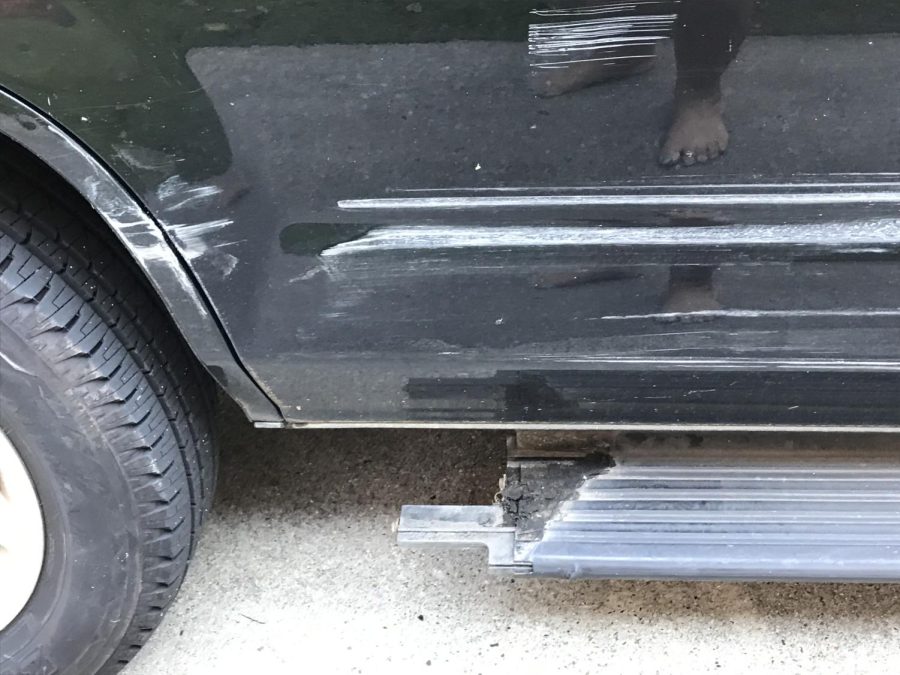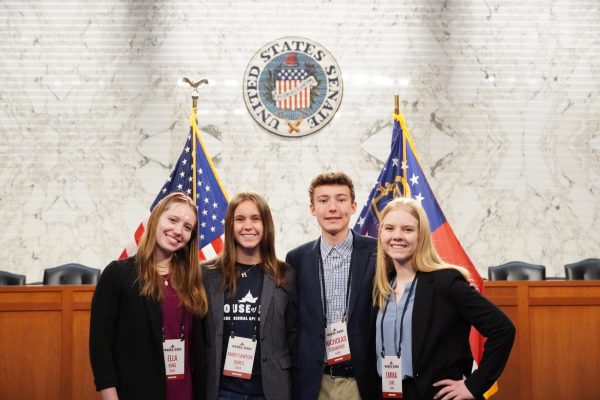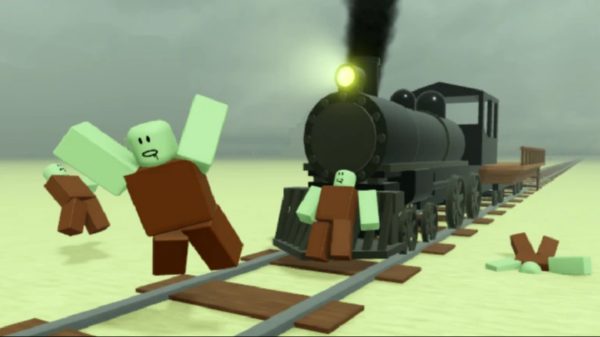Do I Call My Parents or 911? The Uncertainty of Car Accidents
Photo courtesy of Ashika Srivastava
Ashika Srivastava’s car post-accident.
High school is a time many students receive their driver’s licenses. To get your license, you must attend a driver’s education course, which is supposed to provide students with adequate knowledge of all things driving. While attending driver’s education classes is mandatory to get your license in Georgia, there may be gaps in teens’ knowledge of safe driving. More specifically, some teenagers, including Chamblee students, are still unsure about what to do in the event of a car accident.
Many Chamblee students have said that they or someone they know had been in a car accident. However, most students who were asked about their knowledge of car insurance said that they had little to no knowledge about car insurance use when it comes to car accidents.
“My mom is making me buy my own car insurance, but I know literally nothing about it,” said Siena Lizcano (‘24).
Chamblee does a driver’s education program through Nathan’s Driving School, which many students here use to get their required driver’s education course and hours. Natalie Sarzen, now a senior, was once one of these students.
“We went over car insurance during driver’s ed. I’d say that because of driver’s ed, I know what to do if I get in an accident,” said Sarzen.
During the COVID-19 lockdown, many students nationwide had to take driver’s education online instead of in-person.
“I took it online. I did the course, did my 30 hours and I learned how to drive from my parents, which I thought was better than doing it with an instructor,” said Coco Bradford (‘23). “An instructor would have been helpful, but also I think it was going to stress me out too much, so I’m glad I didn’t [have an instructor]. Also, I just did defensive driving, which is again a course online, with the same kind of information that I already knew, but you know, it’s always helpful to hear it again.”
Bradford had the unfounded chance to apply her knowledge in real life when she was in a car accident this February.
“I knew, I was like I’m going to pull over, get off the road, talk to the driver, call the police, call my dad. That was cemented in my mind. So I knew what to do there. And then like when, when I did driver’s ed, they were like, get out of the road, call the police for a police report and get the other driver’s insurance and which is what I did,” said Bradford
Defensive driving is a course that drivers are often required to take after getting in an accident, as Bradford did.
“We used insurance when I got in the accident,” said Bradford. “Immediately, the other guy came up to me and was like, ‘Can we trade insurance information?’ and I was like ‘Yeah, for sure.’ So, we took a picture of each other’s insurance information. Then, we stood there and the police came to report my improper U-turn, and my dad came, and then he was like, ‘Okay, I’m going to deal with the car insurance and your mom has to deal with the ticket.’”
While it may have been frustrating at the time, the accident proved to be beneficial to Bradford in the long run.
“It for sure made me a better driver. I think just the shock of it is like, oh my god, this is a weapon. I am driving a weapon. This is going to kill somebody if I don’t use it right. So, I think it has made me more aware in general, just because now I’m looking for where I could get in an accident and avoiding it, which is super helpful for me,” said Bradford.
What to do if You Get in a Car Accident
Step One: Stay calm! The calmer you are, the better prepared you will be to assess and handle the situation.
Step Two: If your vehicle is driveable, move it onto a safe spot on the shoulder of the road or otherwise out of the way of traffic.
Step Three: Talk to the other driver. After making sure you and any passengers are uninjured, exchange insurance and contact information with the driver of the other vehicle. (Full name and contact information, insurance company and policy number, driver’s license and license plate number, type, color, and model of vehicle, and the location of accident).
Step Four: Call 911 and report the accident, if needed. If you or the other driver were hurt or the cars were totaled, this is VERY IMPORTANT and should be done immediately. You will need a police report in all insurance cases.
Step Five: Call a tow truck or other roadside assistance, if needed.
Step Six: Wait for help. Get out of the vehicle. If it is unsafe to do so, keep your seatbelt fastened and turn on your hazard lights.
Step Seven: Document the accident. Take pictures of both cars, take pictures of any injuries, and get a copy of the accident report if possible.
Being attentive and careful when driving, especially as teenagers, is extremely important.
“Pay attention. It’s a really bad idea to not pay attention [while driving], and risking [danger] is just really not worth it. [Accidents] just end up [with] this whole process that we’ve been in since February,” said Bradford. “But if you do get in an accident, don’t stress about it too much. I was really overwhelmed and I was losing my mind for like a week and I went, ‘Oh my God, this is going to be horrible. How am I ever going to drive?’ But it ended up being okay. And you can face your fears and get better at driving and be more attentive. So overall, it’ll be fine, no matter what happens.”
Your donation will support the student journalists of Chamblee High School Blue & Gold. Your contribution will allow us to print editions of our work and cover our annual website hosting costs. Currently, we are working to fund a Halloween satire edition.

Emmy Williams ('24) is a senior and staff writer of the Blue & Gold. In five years, she hopes to still be a student, receiving a Master's degree in something fancy and totally useless. Her three favorite things are weird books, Valentine's Day, and black cats.












Elizabeth Avett • Oct 30, 2021 at 9:22 pm
Super information! Thank you for info I can copy and keep in the car…just in case I should ever need it!